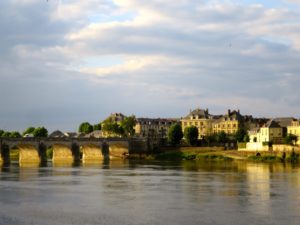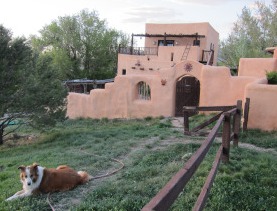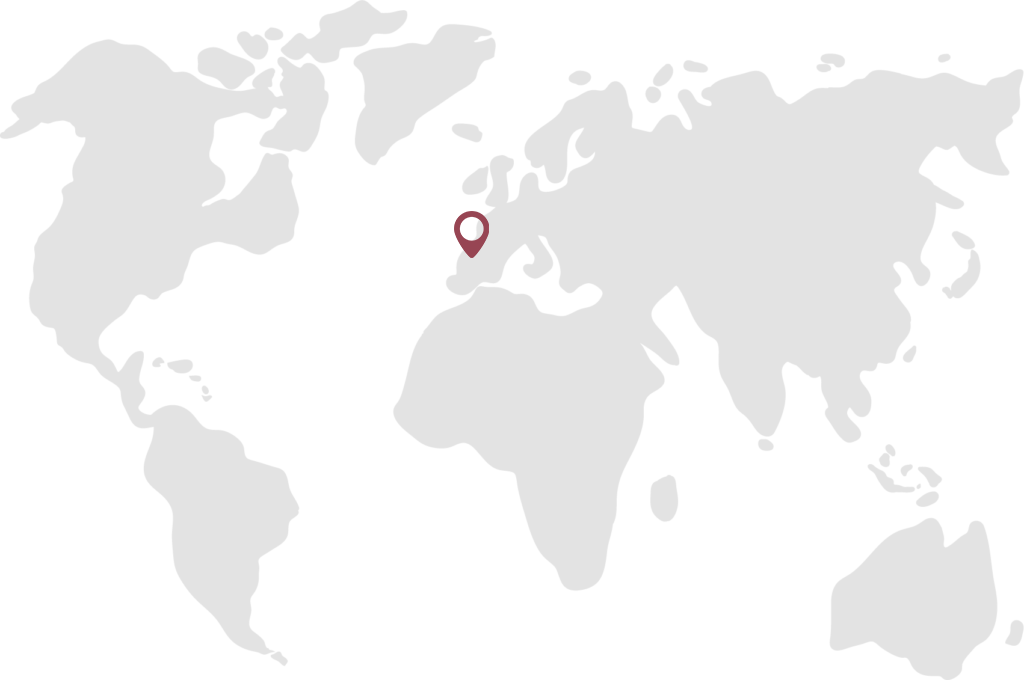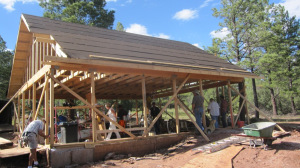
Last week a group of about twenty people worked above 8,500 feet elevation in the Zuni Mountains of New Mexico. We built a straw bale house. We huffed and puffed and stacked bales, placed electrical conduits, and wrapped mesh over straw walls before plastering part of the 900 square-foot home.
Why use straw bales? Straw has excellent insulating value. It also allows corners to be well rounded, providing a warm and comfortable feel to interior space. Houses walled with straw bales are also actually more fire-resistant than timber framed dwellings.After the workshop, I drove west and stayed for a night outside of Phoenix, Arizona, at the home of a couple who had attended. Julie is an architect and her husband Mark is an architectural engineer and contractor. They designed and built the gorgeous house they now live in with their four children.
We ate a dinner of grilled kebabs and drank from two bottles of wine that Julie and Mark had purchased that afternoon. For a white – we tried Capitel Tenda Soave (2008) from Tedeschi in Verona, Italy. For Red – we uncorked a bottle of Monastrell No. 1 (2005) from Diego Fernandez in Valencia, Spain. Both wines went well with our conversation about living off the grid.
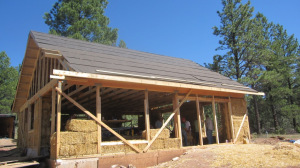
You may say that’s hogwash. How can any wine be considered a good match for a conversation? Isn’t that a stretch?
Not at all. What do straw bale homes have in common with these wines? Here’s a clue: how familiar are you with straw bale construction? How much do you know about the grape varietals Garganega or Monastrell? For most people, the answer to both questions is – Not Very. We are NOT talking about a home constructed by Centex or Pulte, or about sipping a glass of Chardonnay or Cabernet Sauvignon.
Like straw bale construction, these two wines are off the grid and far from the beaten track. They thrive beyond the bounds of mainstream thinking. Take Soave wine. It’s made from Garganega grapes and produced in only a few Italian municipalities (including one named Soave). As for the Monastrell (also the name of the grape varietal), only about 2000 cases are produced a year and the wine is revered by the Spanish organization Vinos Sin Ley (“Wines without Law”) because the young winemakers managing the production focus on producing good, innovative, and value oriented wines. Hardly mainstream.
A day after I left their cosy home, Julie forwarded me two website addresses. These are for wineries housed in buildings made from straw bales. Very cool (both literally and figuratively).
Learn more about this web log.
Check out:
http://www.strawbalewinery.com/
http://www.claibornechurchill.com/about_the_winery/
And here is another in New Zealand:
If you are interested in learning about how to build your own cost-effective, comfy, off-the-grid, gorgeous straw bale home, I suggest you contact Andrew Morrison, who hosts workshops throughout the country: Click on:



